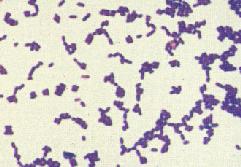Gram Stain Set, 4 x 4oz bottles
This Gram Stain Set consists of four chemicals, each in a handy four ounce HDPE flip top dropper bottle.
Contents...
- Solution #1 - 0.5% Crystal Violet with 10% Ethanol and 0.8% Ammonium Oxalate.
- Solution #2 - Gram’s Iodine, PVP-Iodine complex. (PVP-Iodine is a stable chemical complex of polyvinylpyrrolidone (PVP) and elemental iodine, which is completely soluble in water, ethanol etc.)
- Solution #3 - Acetone/Alcohol Decolorizer, 1:1 Acetone and Ethanol.
- Solution #4 - 0.5% Safranin.
Because of the flammable Acetone/Ethanol solution, this staining set only ships to destinations within the 48 contiguous US states and Canada using Standard Ground by FedEx or UPS • No air deliveries allowed • Customers in Canada should expect additional duties, taxes, and customs clearance service fees due upon delivery
Overview...
The Gram stain procedure was originally developed by the Danish physician Hans Christian Gram to differentiate pneumococci from Klebsiella pneumonia.
In brief, the procedure involves the application of a solution of iodine (potassium iodide) to cells previously stained with crystal violet or gentian violet. This procedure produces "purple colored iodine-dye complexes" in the cytoplasm of bacteria. The cells that are previously stained with crystal violet and iodine are next treated with a decolonizing agent such as an ethanol/acetone mixture. The difference between Gram-positive and Gram-negative bacteria is in the permeability of the cell wall to these "purple colored iodine-dye complexes" when treated with the decolorizing solvent. While Gram-positive bacteria retain purple iodine-dye complexes after the treatment with the decolorizing agent, Gram-negative bacteria do not retain complexes when decolorized. To visualize decolorized Gram-negative bacteria, a red counterstain such as safranin is used after decolorization treatment.
Preparation of the smear...
The first consideration is the correct preparation of the smear. Make a thin film of the material on a clean glass slide, using a sterile loop or swab for viscous specimens. Air dry, then heat fix the slide by passing it several times through a flame (the slide should not become too hot to touch). Failure to follow these directions may cause staining artifacts and disrupt the normal morphology of bacteria and cells.
Smears that are not properly fixed tend to be washed away during staining and washing resulting in the absence of stained bacteria.
Staining procedure...
- Flood slide with crystal violet - 10 seconds. (Wash with running tap water).
- Flood with Gram's iodine - 10 seconds. (Wash with water).
- Carefully decolorize with ethanol/acetone mixture until thinnest parts of the smear are colorless. (Wash with water). This third step is the most critical and also the one most affected by technical variations in timing and reagents.
- Flood with safranin (pink color) - 10 seconds. (Wash with water). Air dry, or blot with absorbent paper.
Results...
Organisms that retain the violet-iodine complexes after washing in ethanol stain purple and are termed Gram-positive, those that lose this complex stain red from the safranin counterstain and are termed Gram-negative.













